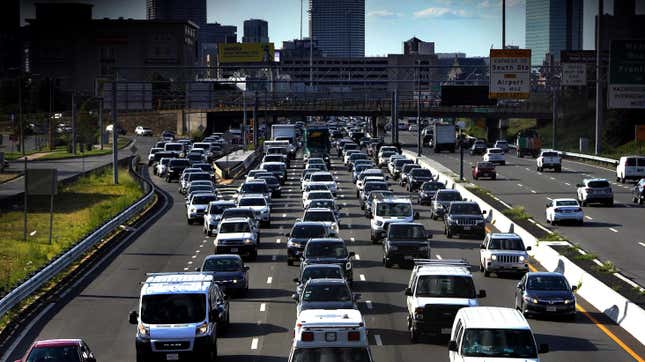
Artificial intelligence has weaseled its way into plenty of parts of our daily lives, and it makes everything worse wherever it goes. So what happens when AI is faced with a situation that, seemingly, is already as bad as it could possibly be? Well, after a new attempt to use AI to address Boston’s traffic, we may soon find out.
The effort comes from illegal monopolist Google through a project called Green Light, according to local station WCVB 5, which claims a goal of reducing traffic emissions by improving flow through intersections with AI. Google’s bot models traffic and passes recommendations on to city engineers, who have implemented changes for traffic light timing in four intersections thus far. From WCVB:
“At the intersections of Huntington Ave. & Opera Place and at Amory Street & Green Street, stop-and-go traffic has been reduced by over 50%. Cities around the world that use Project Green Light have experienced a 10% average reduction in emissions,” the city’s statement said.
Claiming to model Boston traffic is bold, given that Boston drivers themselves seem incapable of predicting where even their own cars will be at any given point, but it may not be as bad a use case for AI as it sounds. This kind of modeling of large-scale data is markedly different from asking ChatGPT how much glue should be on your pizza, and it’s possible Bostonians may see some benefits from the program. Things certainly couldn’t get worse — Boston’s traffic is fourth worst in the U.S. and eighth worst in the world, according to a study earlier this year.
With any luck, Project Green Light will ease Boston’s hellish traffic and make the average Dunkin-to-Dunkin drive a bit less frustrating. If it fails, well, it may be hard to tell at first. Finally, a situation where AI just can’t lose.

